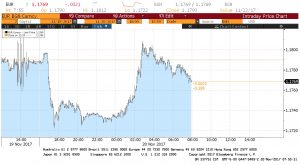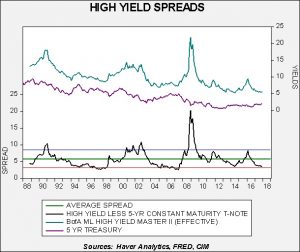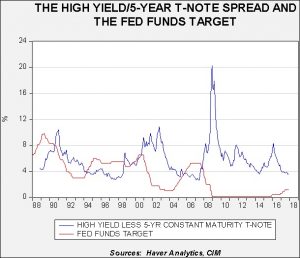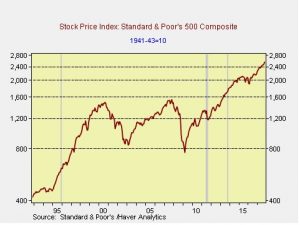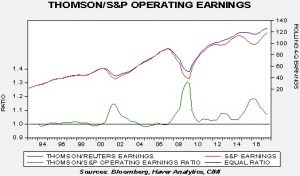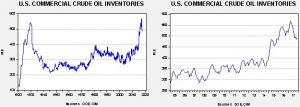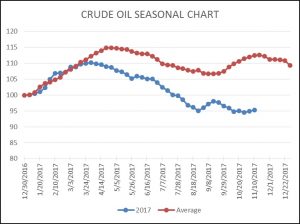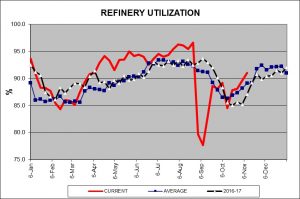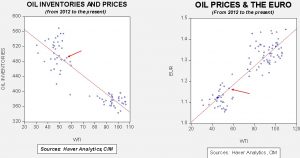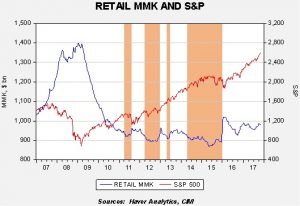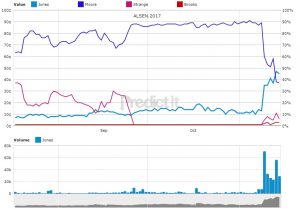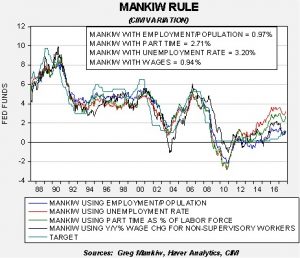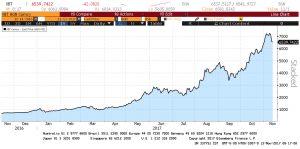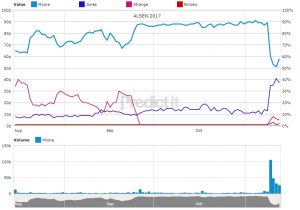by Bill O’Grady
(N.B.: Due to the Thanksgiving holiday, the next edition of this report will be published December 4.)
Last summer, King Salman surprised the Kingdom of Saudi Arabia (KSA) by demoting Crown Prince Muhammad bin Nayef and replacing him with one of the king’s sons, Mohammad bin Salman (MbS).[1] In the months preceding the event, the king’s son had been building his power base, gaining control of key parts of the economy and the security sectors. After being named crown prince, MbS further consolidated power and boosted his profile. He was given responsibility for the war in Yemen and, later in the summer, MbS and the king accused Qatar of supporting Iran and the Muslim Brotherhood. When the KSA was unable to force Qatar to acquiesce to rather stringent demands, the KSA and the rest of the Gulf Cooperation Council (GCC) nations [2] implemented a blockade on Qatar.[3] To date, the war in Yemen continues to drag on without any obvious conclusion and Qatar is managing to prosper despite measures taken against it.
Despite these disappointments, MbS continues to charge forward. He has unveiled his plans to restructure the economy in a program called Vision 2030.[4] In recent weeks, he also showed plans to build a new massive mega-city on the country’s north coast that would be a hub for growth and innovation.[5] To pay for all these changes, the KSA plans to sell at least 5% of Saudi Aramco to foreign investors. MbS has also implemented other economic reforms and a degree of economic austerity to build savings for these aggressive economic reforms. The crown prince is essentially in charge of all these efforts as well.
For all this to succeed, MbS has two audiences he needs to sway. The first audience is the majority of Saudi citizens. Due to a rapid rise in birth rates, Saudi Arabia has a very young population; 61.5% of the population is under the age of 35.[6] The youth of Saudi Arabia are disgruntled with social restrictions, slow economic activity and the general ossified nature of the KSA’s ruling structure. Over the years, the ruling al-Saud family has selected its kings from the sons of Ibn Saud. These men are aging and the consensus management has led to political stagnation.[7] Although there is little evidence of a rebellion, the rising youthful majority does have to be addressed before it becomes a rebellion.
The second audience is foreign investors. The economic reforms being considered by MbS will need significant funding that will require outside investment. Thus, MbS must project not only an air of progress and excitement but also stability and a clear ability to execute. That is a fine line to navigate.
We chose the title of this series deliberately. It is the motto often ascribed to the management of major technology firms.[8] Primarily started by young men, their goals are to disrupt whatever industry they move into and bring change. However, as time has passed, the negative externalities of “breaking things” as part of their behavior has becoming increasingly apparent. It appears to us that MbS is adopting the mindset of the tech industry in remaking the KSA…for better or worse.
This discussion brings us to the tumultuous weekend of November 4. Over that weekend, there were mass arrests, a missile attack and the resignation of Lebanon’s prime minister. And, just before that fateful weekend, there was a crackdown on the religious establishment of the KSA. In this series of reports, we will discuss these events in detail, the broader geopolitics of the region and American foreign policy drift. Specifically, Part I will focus on the sweeping arrests. Part II will examine the resignation of Saad Hariri, Lebanon’s former PM, the missile attack on Riyadh and the crackdown on the clerics. Part III will discuss these events within a broader geopolitical context and examine the drift in U.S. foreign policy. As always, we will conclude the series with market ramifications.
[1] See WGR: A Coup in Riyadh, 7/31/17.
[2] The GCC consists of Bahrain, Kuwait, Oman, Qatar, the KSA and the UAE.
[3] See WGRs: The Qatar Situation: Part 1, 8/7/17; and Part 2, 8/14/17.
[4] http://vision2030.gov.sa/en
[5] https://www.bloomberg.com/news/articles/2017-10-24/saudi-arabia-to-build-new-mega-city-on-country-s-north-coast
[6] https://www.populationpyramid.net/saudi-arabia/2016/
[7] See WGR: Saudi Succession, 1/20/15.
[8] https://www.amazon.com/Move-Fast-Break-Things-Undermined/dp/0316275778



